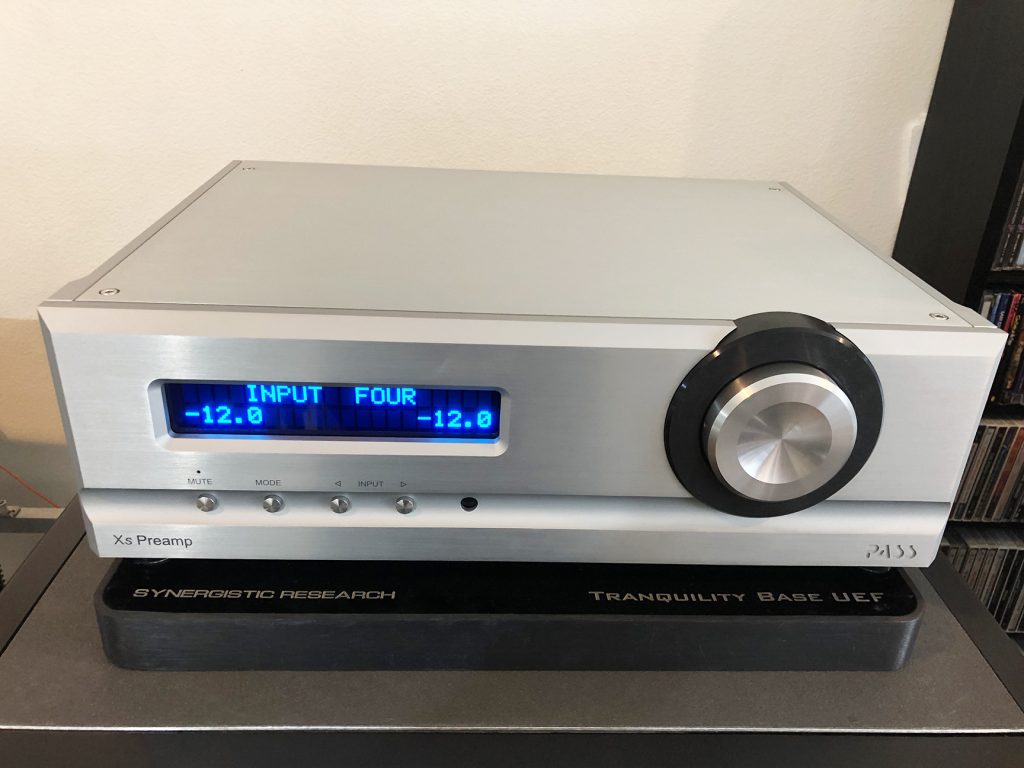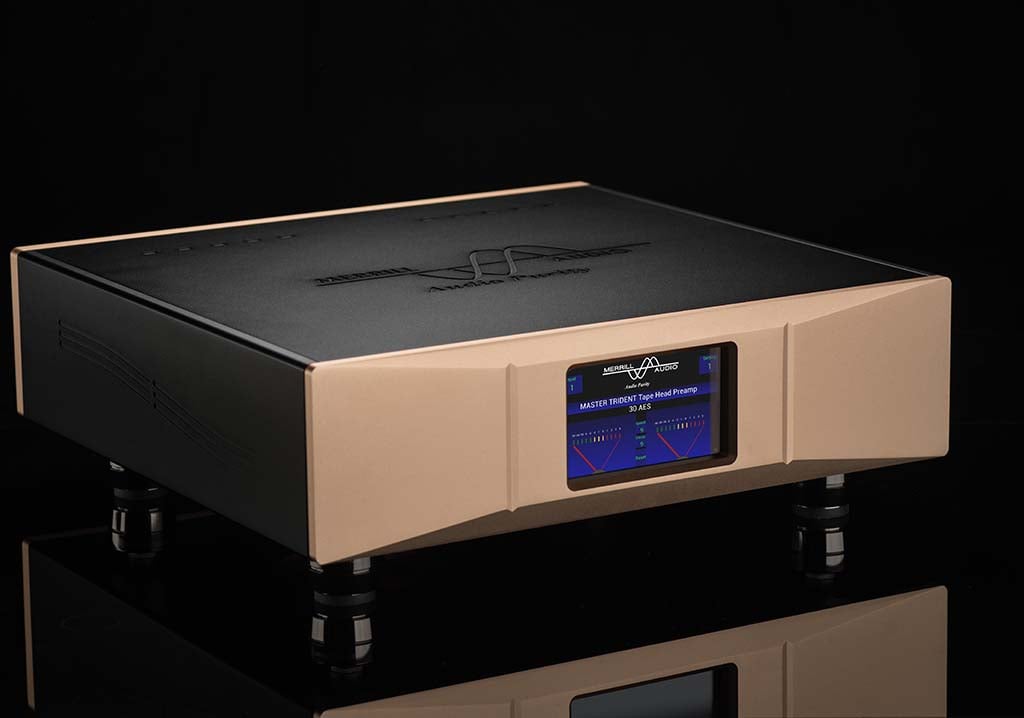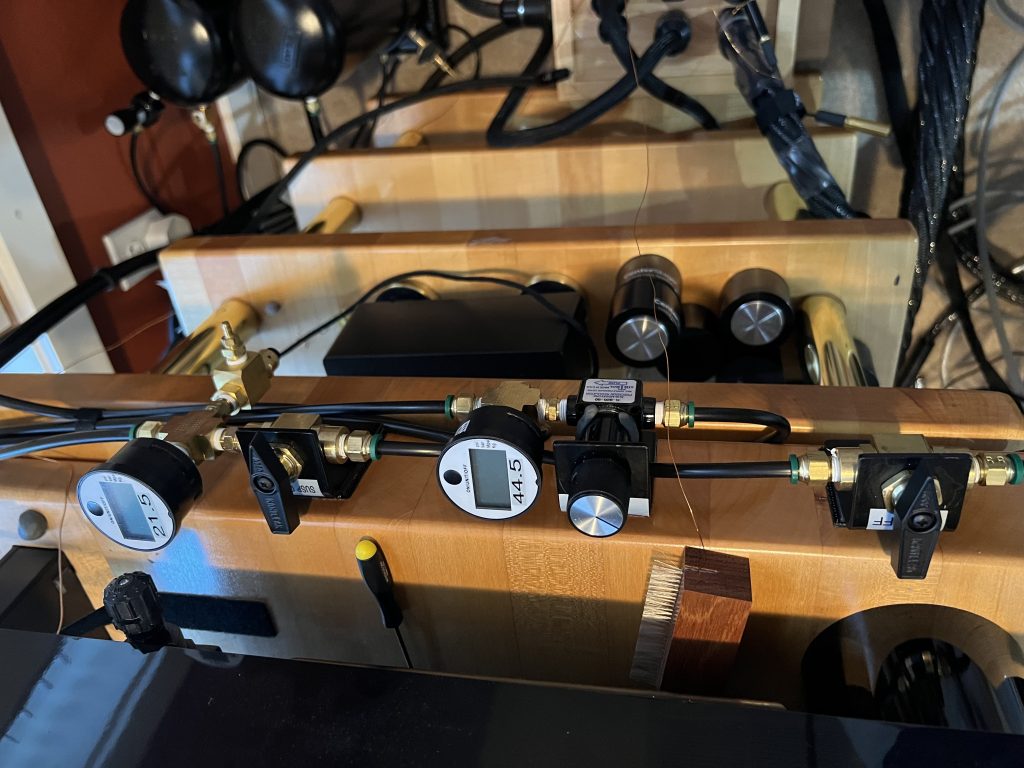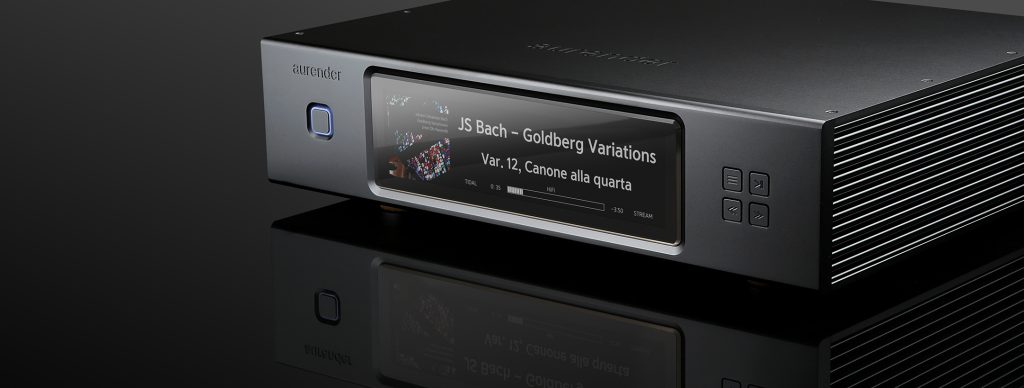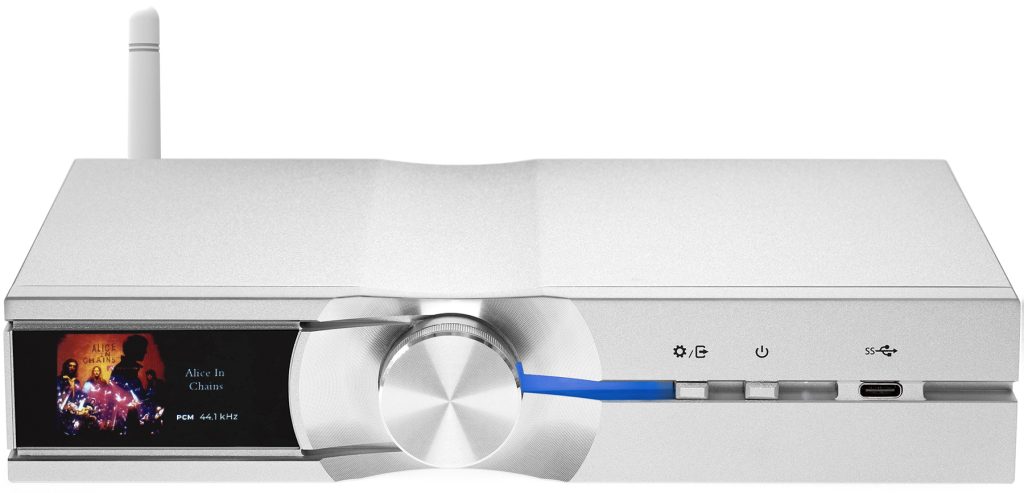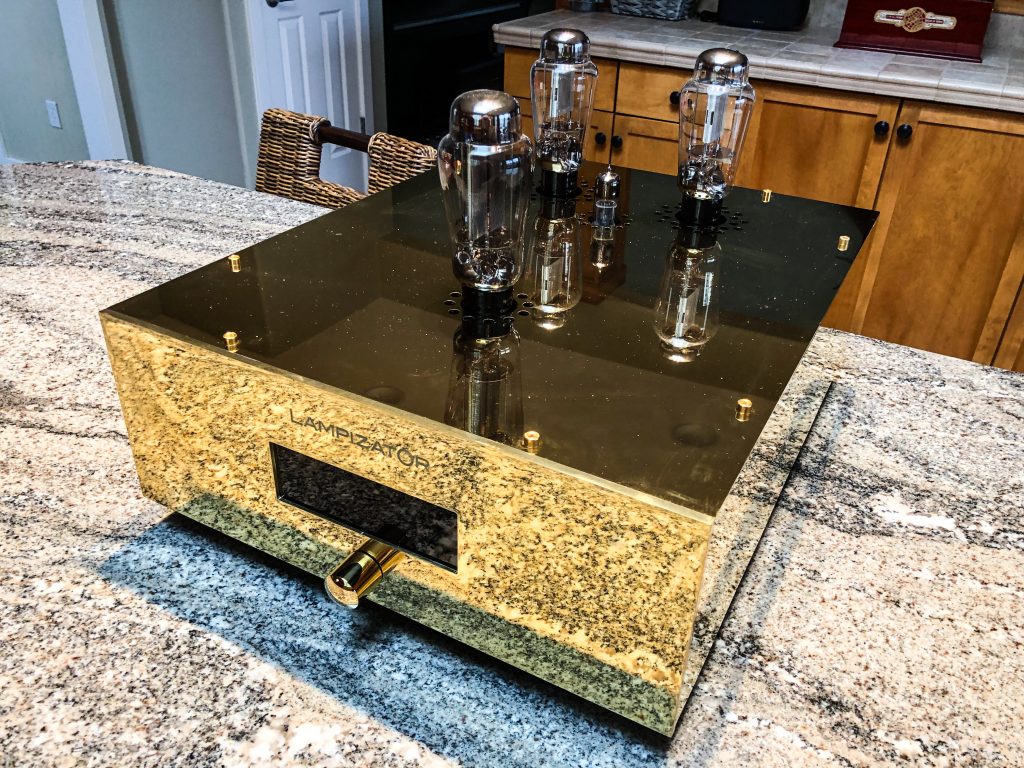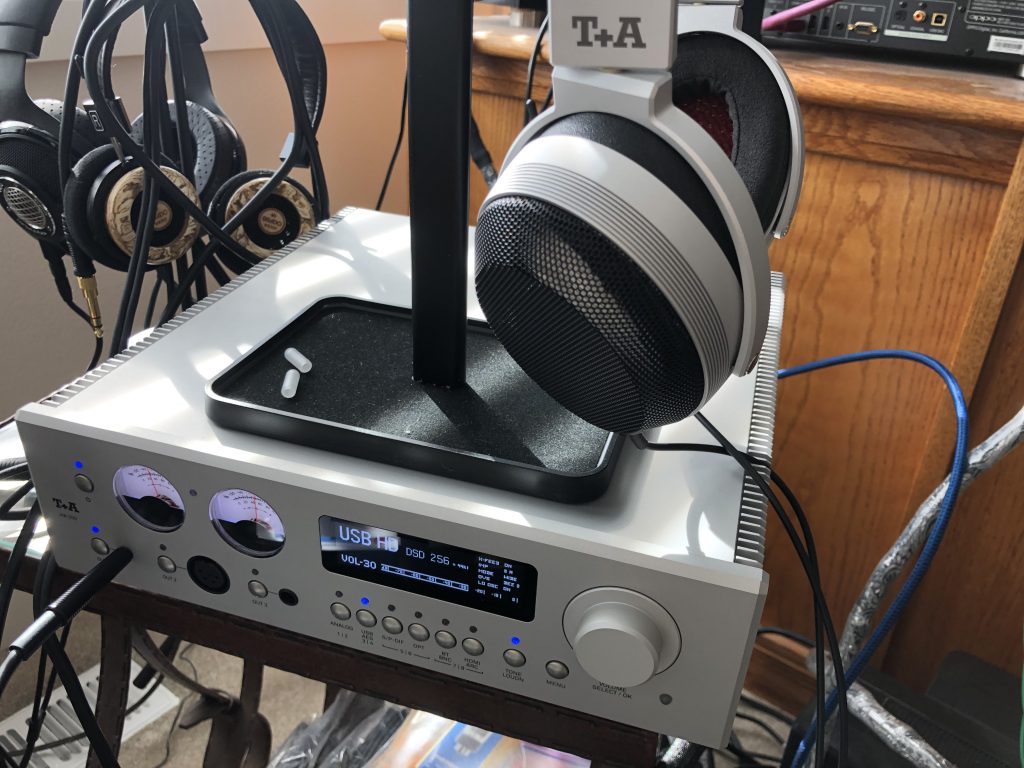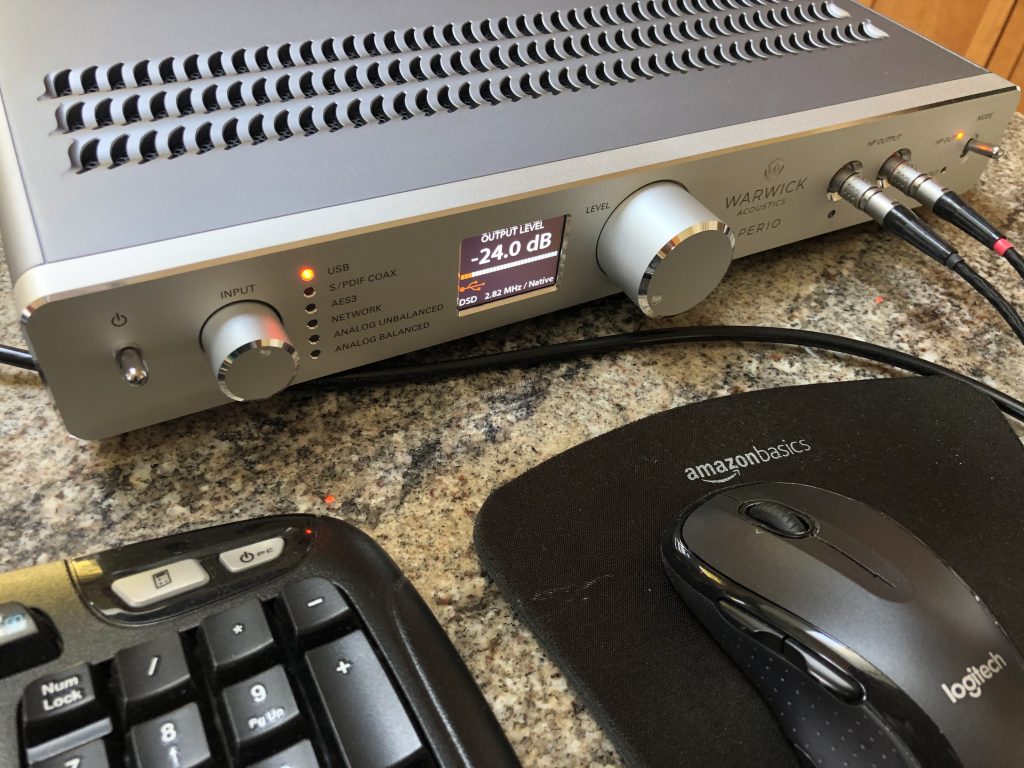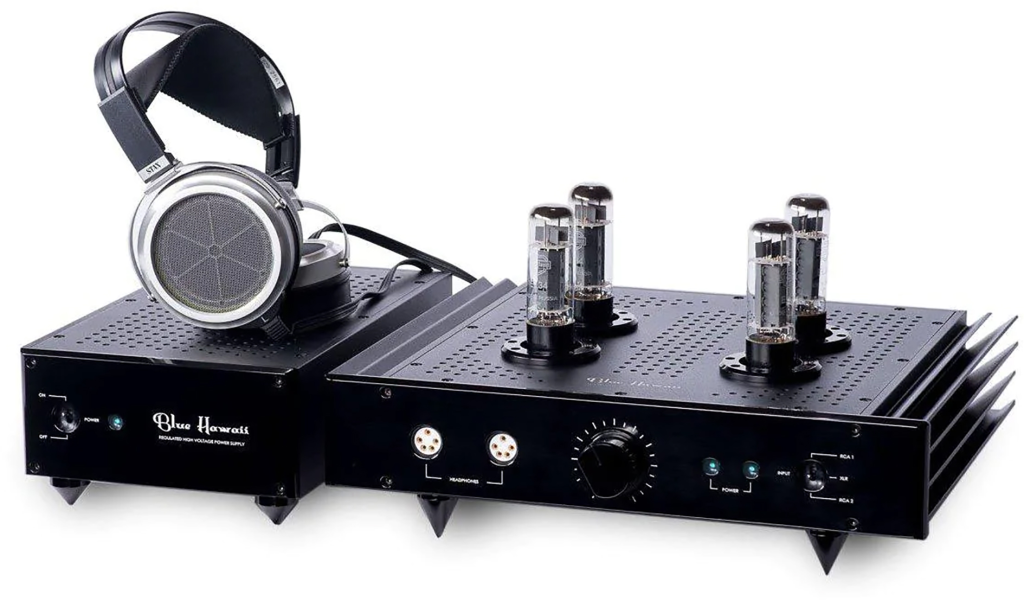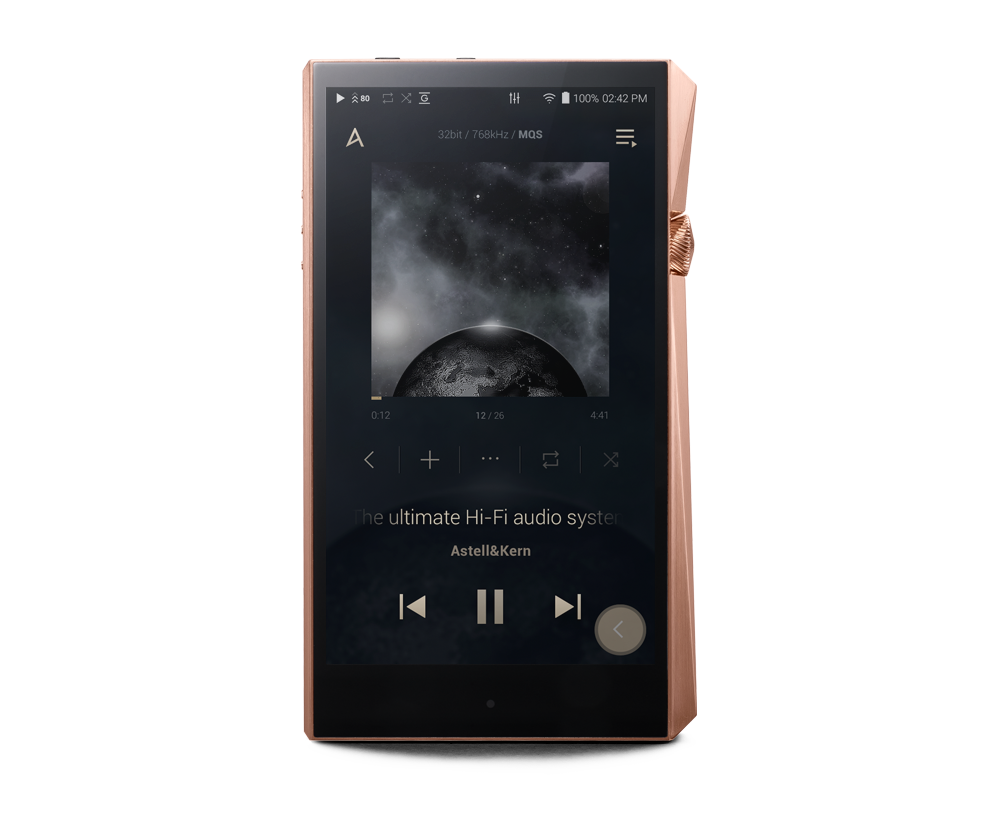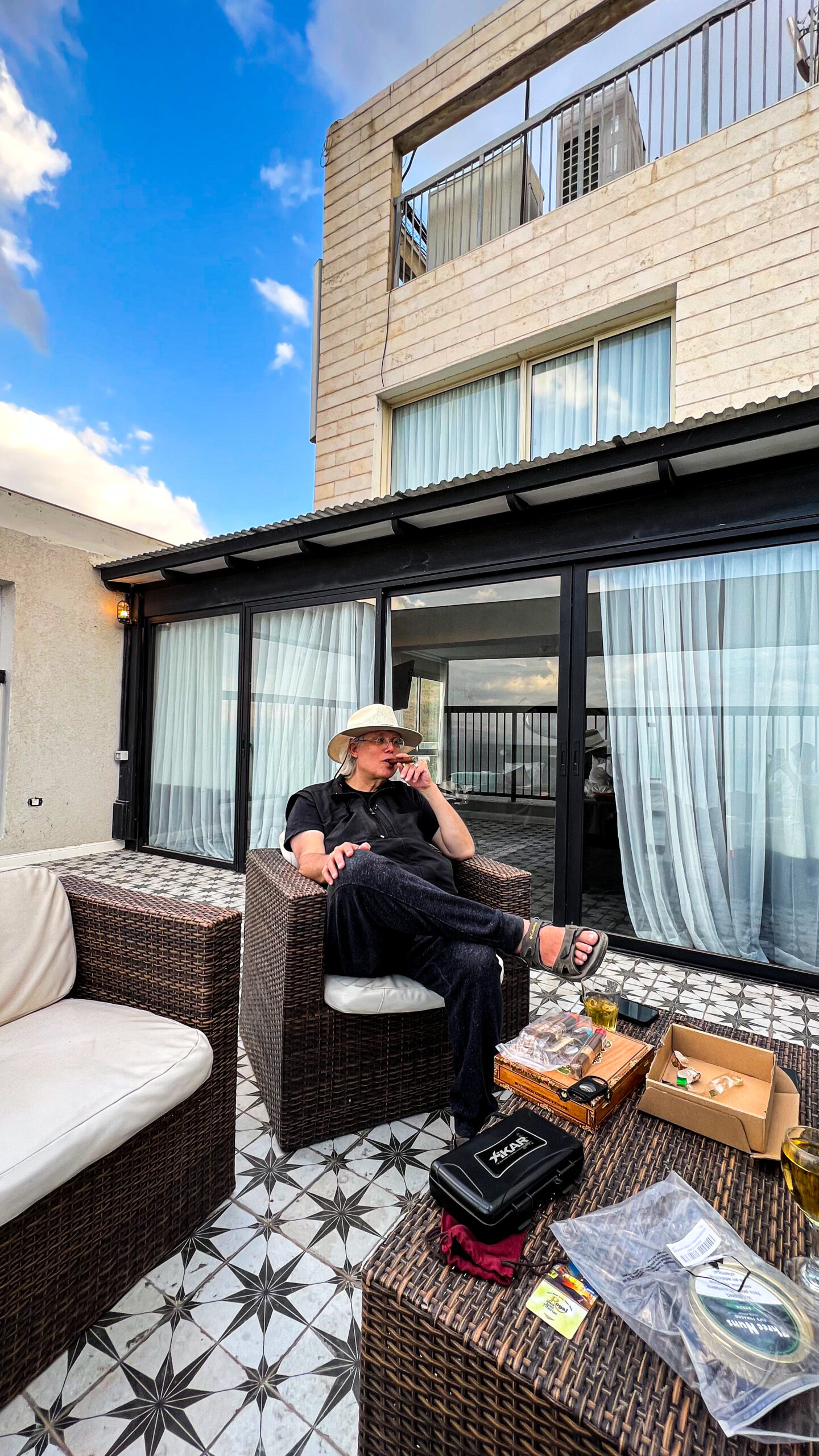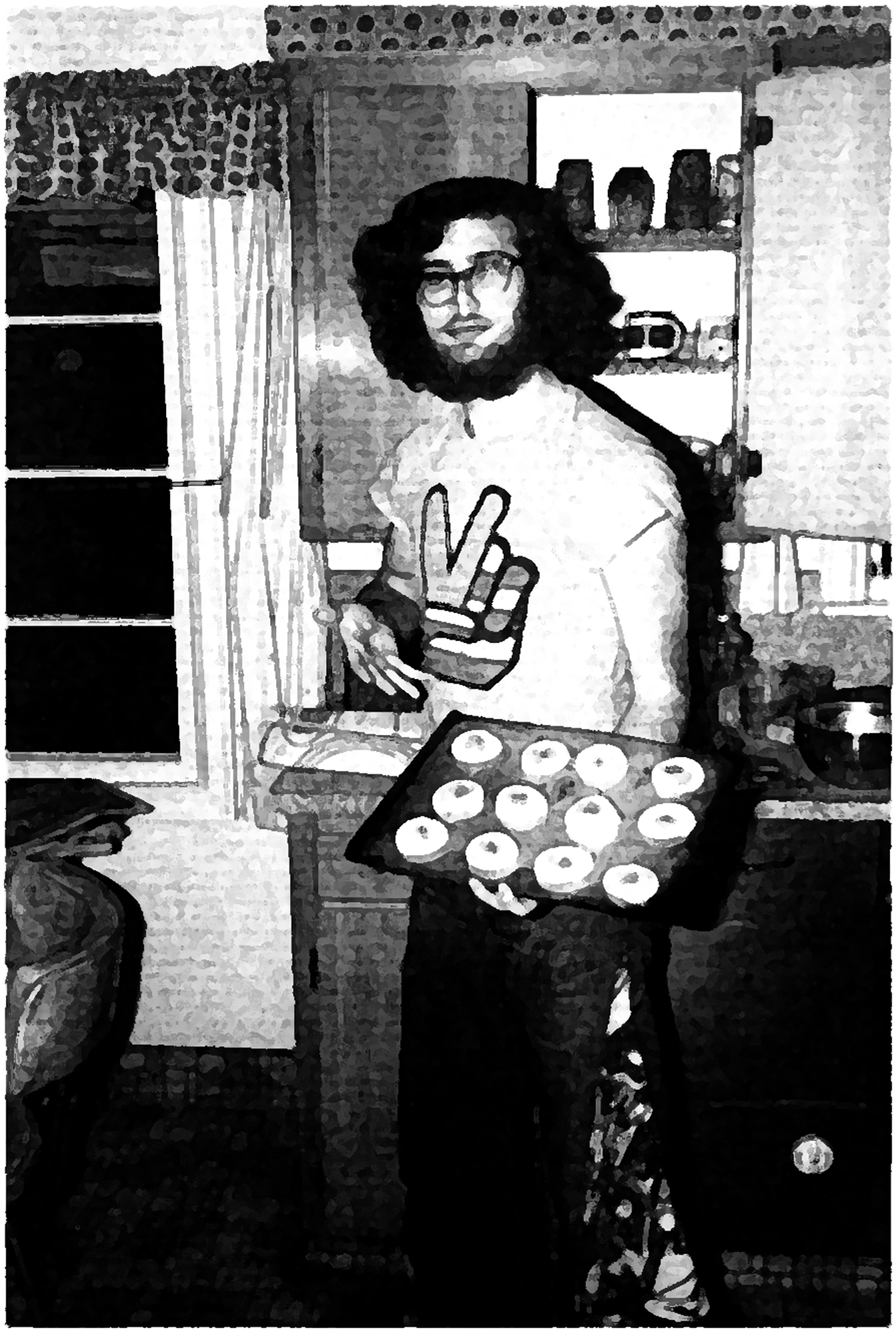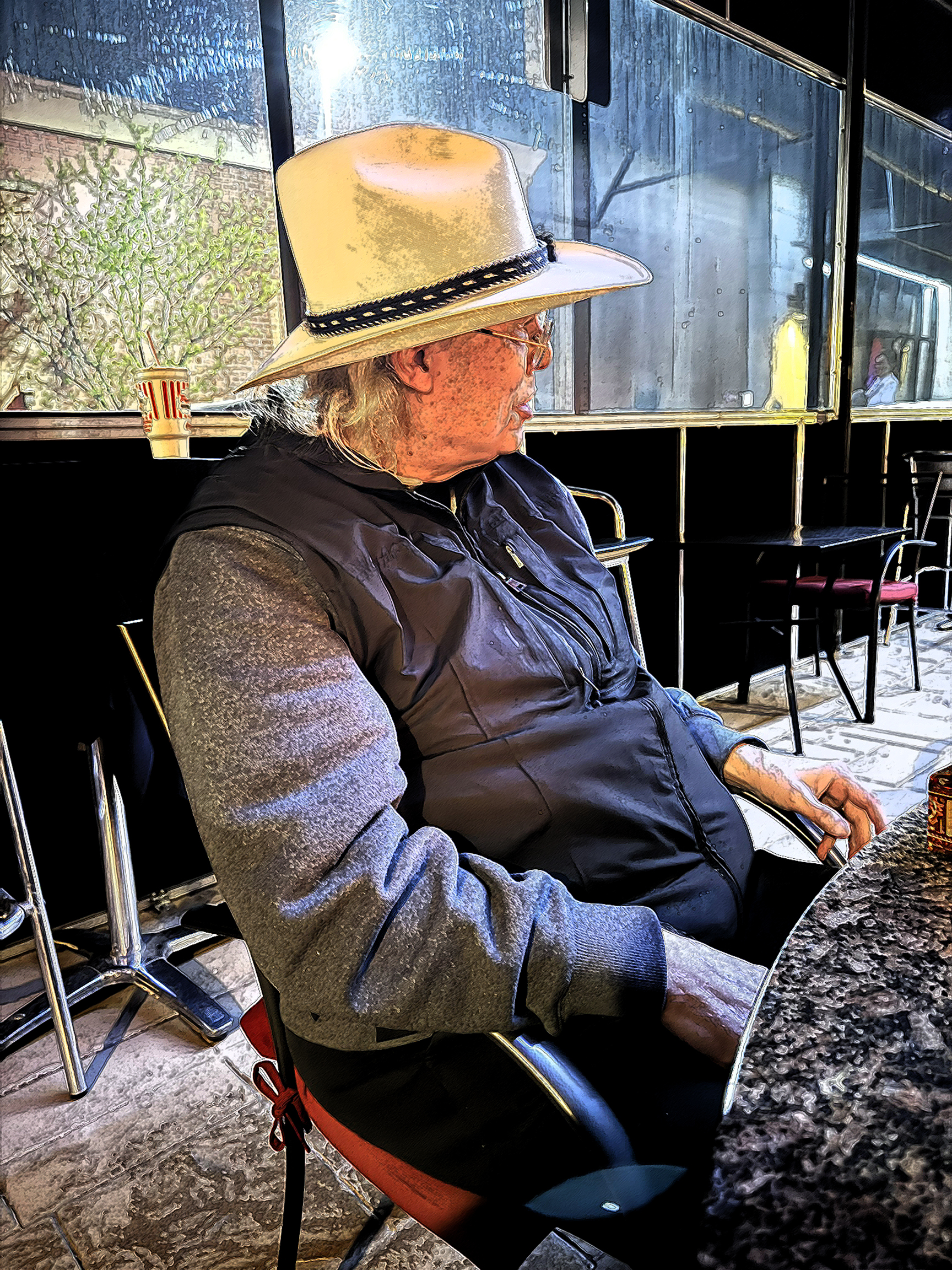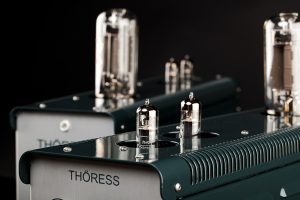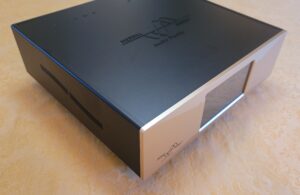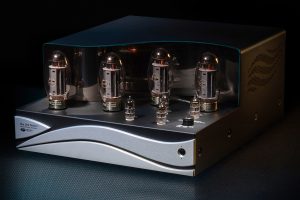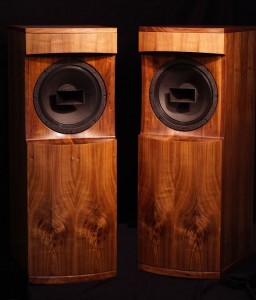
Introduction
Funny how you can get bushwhacked by excellence in the audio arts.
In the early spring of 2014, Bill Parish, a long-time audio friend, got in touch with me about a line of products that he thought I would be interested in. It was from a company that I had never heard of: Audionet, of Germany. All solid-state reference-level kit: a preamp, a phono amp and dedicated power supply, and a pair of monoblock amps. Would I be interested in checking it out, on his recommendation?
Knowing Bill, this was a pretty easy "yes" for me. He's a high-end audio distributor who has shown a lot of savvy over the years in handling some top-notch brands, and his recommendations are generally gold for me…no risk, really. The components would be shipped to me directly from the factory in Germany, apart from the phono amp and its power supply, which ended up being sent to me from Bill directly.
Due to production and shipping delays, the equipment didn't arrive until near the end of May, literally just before THE Show Newport Beach 2014. It was a hectic time; there were two different projects that I was juggling logistically before taking off. One was Audionet; the other was preparing for a major upgrade to my Walker Audio Proscenium Black Diamond turntable, taking it from Level III to Level V. Lloyd Walker and Fred Law would be coming directly up to PF Portland to do the work in a single day, the Monday immediately after Newport Beach on their way home. Going to Level V was not going to be sweet and simple…there was much for them to do. They would be dialing in the turntable upgrades in the middle of an audio system that had just arrived, with zero hours on it. This is not something that I do usually, but the scheduling and logistics had allowed me no choice. Audio reviewing ain't all wine and roses, chilluns.


When the Audionet gear did arrive, it was a fairly imposing stack of boxes. They carried the PRE G2 Reference Preamplifier ($23,350), the PAM G2 Phono Preamplifier ($14,200 with both MC and MM inputs), the EPX External Power Supply for the PAM G2 ($10,100), and a pair of MAX monoblock amplifiers ($30,500 per pair). None are light, though none are going to throw your back out of the window, either. You know…one of those 200 pound behemoth amplifiers, for example. They all came out easily enough, and I was able to handle each by myself.


All that I could do was unpack the equipment, place it in our listening room, connect the cabling, and then leave it for after THE Show. I was completely out of time for anything else…
In the Aftermath of Newport Beach
On Monday, right after Newport Beach, Lloyd and Fred would arrive to dig in on my Proscenium Black Diamond. (The story of the upgrades to the Walker Audio turntable, and the results thereof, will be in a separate report elsewhere in this issue.) It was a bit embarrassing, really; I had to tell them that the Audionet gear was brand-spanking new. It worked, I knew that…beyond that, it was stone cold.
The good news was that during my intervening trip to THE Show Newport Beach 2014 I had been able to spend some quality time in the GTT Audio room. Since it was equipped with the same Audionet preamp, phono amp, and monoblock amps that I had just received, this was an opportunity to check impressions, though under show conditions.

THE Show Newport Beach 2014, in the GTT Audio room…the Audionet MAX monoblocks are on the floor between the YG Acoustics Hailey loudspeakers. All cabling by Kubala-Sosna, their exceptional Elation!, naturally.
As it turned out, I had nothing to fear. In fact, I was so taken by the sound in the GTT room that I gave them one of my Audio Oasis! Awards. My comments about this room, from my show report (Issue 74), stated what I heard at that time:
"Once again I went to Bill Parish's GTT Audio room; once again I was able to lean back with the ‘Oh yeah!' moments that can be hard to find at audio shows. Bill was featuring the YG Acoustics Hailey Loudspeakers, powered by the impressive Audionet line from Germany: The PRE G2 preamp, a pair of MAX monoblocks, the PAM G2 phono amp with EPC Enhanced Power Supply. Sources included the KRONOS Limited Edition turntable with KRONOS Black Beauty tonearm, linked by Kubla-Sosna Elation! cabling. The results were stellar… magic, all over again. Authoritative, deep, detailed, rich, powerfully dynamic, and room-filling sound."

The Three Amigos: Dick Diamond of YG Acoustics, Bill Parish of GTT Audio, and Joe Kubala of Kubala-Sosna in the GTT Audio room at THE Show Newport Beach 2014
With this under my aural belt, I returned to Portland sure that the time with Walker Audio would go very well. But, before I go on with my impressions of Audionet…
Specifications
Specs aren't everything…far from it…but they can give you a decent thumbnail of at least some aspects of component performance. When I looked over some key parameters, I could see why I had been taken with Audionet at Newport Beach:
PRE G2

I usually start with the preamp in a system setup. The PRE G2 had a pleasant array of inputs and outputs, all using gold-plated Furutech components…a good sign! These included five unbalanced inputs and one balanced input. On the output side, there is one pair of standard phase unbalanced out, one pair of reversed phase unbalanced out, one pair of unbalanced monitor outputs, and two pairs of balanced outs. A ground post is provided.
The key performance specs for me include the frequency response, a very impressive 0 Hz – 2 MHz (DC-coupled), or 2 Hz – 2 Mhz (AC-coupled), both @ -3dB. That's some bandwidth, friends, and a real prerequisite for very high-resolution audio, in my opinion. The SNR is greater than 110dB @ 2V effective. Output impedance is a low 22 Ohms; maximum output current is 60mA. All of this is promising. The weight is a fairly hefty 20 kilos, or about 44 pounds.

The PRE G2 Custom Logitech Remote Control, resting on top of one of the MAX amplifiers.
Complete remote control functions are provided by a Logitech device that has been custom-programmed by Audionet to handle all of their remote-controllable components. To handle the preamp, you simply select the "Devices" option at the bottom of the touchscreen, scroll to the right using the touchscreen right arrow, and then touch the "PRE G2" option. This then displays all of the input options, and allows the user to set volume, muting, and input very quickly. It has worked like a charm throughout the time of this review project. The remote has a charging stand; I recommend that you use it whenever you aren't going to be using this component during a listening session.
For more on the description and specs, HERE.
PAM G2 Phono Preamp and EPX External Power Supply

The Audionet PAM G2 Phono Preamplifier in place on Stillpoints Ultra 5 isolation feet resting on the Stillpoints ESS Grid Rack. The EPX is to the left, out of the frame.
The two-box Audionet phono amp system is a sophisticated design for handling MC and MM cartridges. The PAM G2 has two pairs of unbalanced inputs for two different turntables or tonearms, with two additional unbalanced inputs for adding more resistance or capacitance adjustment (one per input). On the output side of the ledger, there is one pair of unbalanced, and one pair of balanced sockets.

The Audionet PAM G2, interior view. (Photograph courtesy of Audionet)
Of particular interest is the array of three adjustable controls per input for the handling of cartridges. Gain is externally selectable via a dial from four options: 38dB, 48dB, 58dB, and 68dB. The second control is resistance, which can be set for 100, 150, 470, 1K, 23K, 47K, and 69K Ohms. Finally, there is a control for capacitance, with options of 100, 200, 320, and 420 pF (for MM cartridges).
Announced key specs for the PAM G2 were, like the PRE G2, very fine. The frequency response is stated to be 40Hz – 30kHz, +/- 0.2dB, and 18Hz – 80kHz, +/-1.0dB. Again, this is a first-class range. SNR is greater than 103dB at 38dB gain, and greater than 83dB at 58dB gain. High bandwidth, low noise…a pleasant profile for a phono amp. The weight is a reasonable 9 kilos, or just a shade under 20 pounds.
We all want gain without pain; the PAM G2 seems constructed to provide it.
For additional information on the PAM G2, see the Audionet website.

The Audionet PAM G2 and EPX are shown in place on the second shelf of the Stillpoints ESS Rack System with Grid Shelves and Ultra 5/Ultra SS isolation feet. The PAM G2 Phono Preamplifier is directly under the Wave Kinetics NVS Turntable and Isolation Platform; the EPX is to its left. Both are on the Stillpoints Ultra 5 isolation feet.
The Audionet External Power Supply is a heavy-duty, precise power supply, which Audionet claims decouples the PAM G2 from the vagaries of the local power grid in your setting. The EPX has two 200VA toroid transformers, and 576,000 μF of capacitance, to smooth variations in power. With its optimized chassis and double transformers, the EPX tips the balance beam at 18 kilos, or just under 40 pounds…definite heft here!
The EPX does the job of taking the PAM G2 to another level of purity and performance. The task of retrieving the very low signals from MCs is a delicate one; poor handling of the power supply in a phono amp will lead to degradation of the handling of the input signal. The EPX is Audionet's effort to minimize such signal corruption in their attached devices.
Additional information about the EPX is at the Audionet website.
MAX Monoblock Amplifiers

The last piece of the Audionet reference system puzzle was the pair of MAX monoblocks. Listed as their "statement" amplifier, the MAX does have much to recommend it. On paper, these are real beastie boys, a "completely DC-coupled," all-out design. The MAX has both balanced and Furutech unbalanced inputs, both gold-plated, and two pair of Furutech rhodium-plated speaker posts. Remote optical activation ports are present, one in, and one out. This is quality work.
Utilizing what Audionet calls "Ultra Linear Amplifier" technology, originally developed by Audionet for medical applications, provides an extremely high level of signal purity and stability under a very wide range of real-world audio conditions. As Audionet puts it on their Web site:
"The efficiency and precision of MAX is such that even the sound properties of components and materials are clearly audible. As a result, every sound-critical point in the MAX is exclusively fitted with the finest components obtainable worldwide, in some cases custom-made for Audionet. Equipped with a silk dielectric, our High Audiograde electrolytic capacitors come from Japan. Our low-loss capacitors are made of mica, a silicate made for us in India and China.
We deploy selected high-current foil capacitors with a minimal loss angle, high-quality silver-gold alloys for our internal wiring and use the very best connector systems available from Furutech. Even the MAX fuses are made of gold."
The meticulousness of the Audionet approach is rare…not unknown at the top level of high-end audio, of course, but very rare. All signal paths minimized to the shortest possible; no coils, chokes, or power relays in the signal path; microprocessor control for all fault/error conditions: temperature, high-frequency issues, DC offset, and overload. In that event, the MAX is disconnected from the AC power, with an error message. (We did have one fault while using the MAX. The protection system worked perfectly, and the MAX reset worked as outlined in the manual. Nice!)
Audionet's description of MAX's circuit design and operation is concise and helpful (HERE):
"MAX comes equipped with Cinch and XLR inputs, which are electronically switched over gold-plated precision relays. The input stage is configured as a cascaded and bootstrapped differential amplifier with a low-noise, monolithic dual FET, thus electrically decoupling the end amplifiers from the input signal and avoiding harmful interaction with source. A special double cascade decouples the source signal from the driving and output stage. The driving stage linearizes distortion of the output circuit locally with a unique, cross-linked correction circuit in real time. The input and driving stage are separately powered by an oversized 80 VA toroid-core transformer with separate windings for positive and negative operating voltage.
The output stage is equipped with eight hand selected power MOSFETs with actively controlled bias current amounting to 0.6 A. The supply voltage is stabilized as rapidly as possible by optimized discrete MOSFET regulators. To reach optimal performance, the negative and positive operating voltage is decoupled entirely. Two individual 1000-VA toroid-core transformers feed the positive and the negative half-cycles of the mains. Four special, fast and impulse-resistant high-current capacitors with a total filtering capacity amounting to 156,000 uF serve as an accumulator."
Stated specifications are quite strong. The MAX is rated at 400 Watts into 8 Ohms, 700 Watts into 4 Ohms, and a potent 1,100 Watts into 2 Ohms. (With our current speakers, the Evolution Acoustics MMTwos, running somewhere in the neighborhood of a nominal 6 Ohms, we were probably operating at around 500-600 Watts. No problem with volume at any point, I can tell you. This is gain leading to pain….) The frequency response is rated at 0 – 500kHz at -3dB…again, tons of bandwidth. More than that: The claimed damping factor is 1,800 at 10kHz, and a whopping 10,000(!) at 100 Hz. There's certainly plenty of bass control for speakers here. SNR is stated at greater than 125dB. Input impedance on the unbalanced input is 37kOhms, 100pF; the balanced input is 3kOhms, also at 100 pF.
Each MAX weighs in at 38 kilos, or almost 84 pounds…not light, but not excessively heavy, either. It can certainly be handled easily by two people, which I would recommend that you do.
Overall, the visual impression produced by the brushed aluminum Audionet components is clean, attractive, and understated. There isn't a lot of whiz-bang interface building going on in the PRE G2, though the controls on the front of the preamp (Mute, Set, Input, and Power, plus the volume knob) cover the basics. The Logitech remote makes the entire system easy to handle.
Quick Setup Notes
Set-up settled down over time, as we tried several combinations…this took several months to choose and source. (Logistics can be quite the challenge.)
The cabling that we settled on is Kubala-Sosna Elation! for all power cables. (Eventually! See below for a speed bump that we ran into at one point.) For short-run interconnects, the integrated RCAs on the NVS turntable were from Wave Kinetics; the Silent Source RCAs were used on the Walker Proscenium Black Diamond Level V. The long-run interconnects from the Stillpoints ESS rack to the PRE G2 were JENA Labs Duos, shielded, in both RCA and XLR runs. (We plan to upgrade these to Kubala-Sosna Elation! XLR and RCA cables in the near future.) The long-run XLR was for the Playback Designs MPS-5 with USB-X (mainly DSD downloads and SACD), while the long-run RCAs were for the feed from the PAM G2 phono amp and the NVS turntable.
The MAX monoblocks have ended up on three Stillpoints Ultra 5 isolation feet per monoblock, a step that brought a level of clarity to their output, when compared with being simply set upon the listening room carpet. At one point, I was able to try a set of the brand new Stillpoints Ultra 6 isolation feet under the PRE G2 on the main Walker Audio Prologue Rack, which was a notable step forward…it was like taking the PRE G2 out of a pool of light audio goo, despite the many virtues of the Prologue Rack…but those had to go back after only a few hours, and so I am bereft until later this year. My comments on the sound will reflect the baseline of the PRE G2 resting on its own feet on the Prologue.
The PAM G2 setup is resting directly on Stillpoints Ultra 5 feet on the Stillpoints ESS Grid Rack.
The Sound

Lloyd Walker: Master Craftsman at Work!
Now I can return to my impressions on the Audionet system, beginning with that day when Lloyd Walker and Fred Law arrived at PF Central from THE Show Newport Beach. They rolled up their sleeves to do a series of upgrades to the Walker Audio Proscenium turntable itself, plus some new room enhancements that Lloyd had worked up. The upgrades went into the afternoon, before the Proscenium Black Diamond Level V and Procession were ready to try. (At this point, the cartridge was still my trusty Micromagic Magic Diamond MC; it wouldn't get upgraded to the Soundsmith Hyperion MI until the following November.)

Fred Law and Lloyd Walker during the June upgrade of the Proscenium Black Diamond to Level V
I had the Audionet system cooking while they worked. Audionet recommends that their components be online for a couple of hours before commencing serious listening, a rule that I always follow anyway. Once the work that Lloyd and Fred did to upgrade the Walker Audio Proscenium to Level V was completed, but before the room enhancements went into place, we hooked up the new Procession Phono Amp to the Audionet PRE G2, and let the MoFi Silver Label LP of Dead Can Dance's Into the Labyrinth spin up, not really being sure of what we would hear.
Kazow!
Right off the bat, the room "lit right up," as Lloyd says. The Audionet system in my reference listening room was definitely not sounding like it only had a few hours of passive warm-up. Instead, it was demonstrating a set of audio virtues that were of the first rank. For example, rather than sounding hung-over, rolled-off, or congested, the PRE G2 and MAX monos were exceptionally transparent, the audio quality that I prize most highly. There was none of that sense of "components in the way of the music," even in the initial moments of our evaluation of the Proscenium Black Diamond Level V/Procession, via the Audionet preamp. This happens with lesser designs, and has a definite sonic signature to my ears: A sense of rolled-off sound, of nasality, of congested tonalities, and a lack of top-to-bottom organic harmonics. I know this feeling immediately when I hear it. When this happens, either the component (or components) will eventually break-in over time, and lose the constipation, or not.
If not, then they go back quickly. No point in wallowing in the audiomuck.
In this case, however, the sound of the Audionet was a revelation of the surprising clarity of this preamp and amp in tandem, right out of the gate. This sort of thing is rare; there's usually some sort of break-in with brand new gear. In this case, I wasn't hearing stone-cold; I was hearing kit with bloom, right out of the box.
Damn. That's important.
And I wasn't alone in this initial moment. Both Lloyd Walker and Fred Law were struck by the same impression. You need to know that I've known Lloyd and Fred for many years now. They have excellent ears and audio sensibilities, and I trust their impressions of "what's good" implicitly. I've never known them to be wrong, or to send me something that wasn't 100% impressive at this end…and that's for more than ten years now.

Lloyd Walker at the completion of the Level V/Procession upgrade: In the midst of Audionet!
When Lloyd said, "Wow. That's good!" and Fred agreed, I knew that they were hearing what I was. Triangulation, you see…it works in high-end audio, too.
Nor were they the only ones who noticed the excellence of these new components. Over time, good audiobuds with excellent discernment like Jonathan Tinn of Blue Light Audio and Joe Kubala of Kubala-Sosna heard the new Audionet system, and were very impressed by it. Joe knew Audionet already, through his connection with Bill Parish of GTT Audio; Kubala-Sosna cables are Bill's strongly-recommended choice for Audionet. He had heard them at shows, as I've already mentioned. When Joe heard the Audionet in my reference listening room in December, however, he thought that the Audionet system was sounding as good as he had ever heard it. Jonathan has heard a number of components and systems in my room over many years now; the Audionet PRE G2 and MAX monoblocks pleased him, since they synergize so very well with his Evolution Acoustics MM2 loudspeakers.
So, carrying on, the first couple of days with the Audionet PRE G2 and MAX monoblocks were not the usual sort of dreary break-in…of greater or lesser length…that I'm used to. Lloyd and Fred were gone after day one, and I was able to start critical listening immediately.
I have put a lot of music through the Audionet gear from that day in June when it first ambushed me. Single and Double DSD from our terabytes-large archives, and SACDs spinning on the Playback Designs MPS-5 with USB-X. This was output via JENA Labs shielded Duo XLR to the PRE G2. LPs gave us analog through two reference-level sources: Via both the Walker Audio Proscenium Level V turntable with Magic Diamond and Procession phono amp source running to the PRE G2 through Silent Source unbalanced cables; and also by way of the Wave Kinetics NVS/Durand Telos Composite/Ortofon Anna MC through the Audionet PAM G2 with EPX power supply two-box setup. This was sent via JENA Labs Duo shielded unbalanced cables.
The sheer volume of recordings that I've used would take far too long to detail, especially on the DSD side of things. A number of our Single DSD and Double DSD recordings are unobtainium, and so listing them is pointless. (Let's just say that we have sources for sources, and leave it at that.)

Our SACDs included recent releases from Universal Japan's SHM-SACD project, a real treasure trove of A&R; a number of the 2014 releases from Chad Kassem's Analogue Productions; the superb work that Steve Hoffman and company have been doing over at Audio Fidelity (Steve always does such great work!), and the 2014 SACD's from Mobile Fidelity. Many of these releases I have been documenting in near real-time over at Positive Feedback's Facebook page (HERE), if you're curious to see what I've been spinning.

In fact, there's been an embarrassment of riches with SACDs, with important artists: Bob Dylan, The Band, Eric Clapton, Peter, Paul and Mary, Blood, Sweat and Tears, George Benson, Paul Butterfield, Rush, The Police, Steely Dan, Styx, The Scorpions…on and on the list goes. Anyone who complains about the A&R on SACD isn't paying attention, dig?



Then again, maybe they're just wankers.
LPs are all over the place! The vinyl renaissance has given us all the opportunity to collect favorites, greater and lesser, anywhere from 140 grams up to 200 grams. I have some reference albums that I run every time…Analogue Productions, Mobile Fidelity, Speakers Corner, Decca reissues, …hell, who can track them all?!...including especially the new RCA Living Stereo reissues from Chad and crew at Analogue Productions (especially Scheherazade, the Respighi, Zarathustra, and so on); the new Mercury reissues; the aforementioned Dead Can Dance; Louis Armstrong and Duke Ellington in reissue; several titles from Impex Records, especially the Thelonius Monk Straight, No Chaser (brilliant pressing!), and the Oscar Peterson box set of six LPs from MPS in Germany…another utterly righteous set of LPs! Flat, straight, and crystal-clear, Peterson fans!
A Temporary Roadblock
We have another world-class reference turntable in our listening room, the fantastic Wave Kinetics NVS computer-controlled direct-drive ‘table, with its dedicated isolation platform, which was resting on the Stillpoints ESS Grid Rack, on Stillpoints Ultra 5 isolation feet. Equipped with the splendid Durand Tonearms 12" Telos Composite and the Ortofon Anna MC, the NVS gave me the necessary second turntable to be able to assess the performance of the Audionet PAM G2 phono amp and EPX power supply.

It was here that, at first, I thought we would run into a problem. I know the sound of the NVS table intimately, and knew that it was truly a world-class reference source, excelling in combining organic musicality with effortless harmonic righteousness at all times. It is a real beast when it comes to absolute linearity and spot-on delivery of the grooves…and it looks and sounds like a million bucks, too! Having spent several years with its killer sound through the incomparable darTZeel NHB-18NS (revision 1) and its knock-out integrated MC phono section, I was very curious as to how well the Audionet phono section would do with the NVS.

To my genuine surprise, the first results were disappointing. The sound of the NVS was somewhat muddy, rolled-off, and unclear, all to the contrary of what I had heard with the rest of the Audionet system. At first, I thought that the PAM G2/EPX must need more time…perhaps the phono section was different, and more sensitive to the interaction with the NVS system. But then I remember that Bill Parish had told me that this was the PAM G2/EPX that he himself had been using, and that it had plenty of time on it. The cartridge and tonearm had been personally setup by Joel Durand himself in this very room, and had been double-checked by Jonathan Tinn and Matt Schuster of Wave Kinetics thereafter. The setting for gain and loading on the back of the PAM G2 were good. All was totally spot on.
That left me stumped. What could the matter be? I had heard the PAM G2 at THE Show Newport Beach 2014, and I knew that it made great music, and should sound terrific…like the rest of the Audionet chain. I put more hours on the turntable while I thought about it. The PAM G2/EPX sound was out of character with the rest of the system…some variable was off. Really off.
And then it struck me.
I looked behind the PAM G2/EPX and saw it: While I was using Kubala-Sosna Elation! Power Cables elsewhere throughout the Audionet system, I was not using it with the EPX, which supplies the power to the PAM G2 via a dedicated custom cable. Instead, I was using a cable from another manufacturer, which, while very good, is not in the same league as the Elation! Nor was it similar in character to the Elation! that was feeding the other Audionet components.
Being out of Kubala-Sosna Elation! Power Cables, I contacted Joe Kubala for an additional unit. He very kindly sent one to me immediately. I powered off the Audionet PAM G2/EPX and the PRE G2, substituted the Elation! for the previous cable, powered everything back up, and gave it a few minutes to warm-up and restabilize.
Then I re-cued Into the Labyrinth, whose sound was tattooed on my ears.
Zap!
Problem solved.
Clearly the earlier cable was not synergizing well with the EPX; there was no good mojo here. With the change to Elation! the PAM G2/EPX joined the rest of the Audionet family at the dinner table, and began to make beautiful music with them. Now I could shift from being quite guarded about the Audionet phono section to being very pleased with it. In fact, it allowed me to include these components in my list of Brutus Awards for 2014 (see elsewhere in this issue, HERE), instead of having to pass them over, as I would have done. The results are an excellent example of the huge difference that first-rate cables can make in the performance of our reference equipment. Skeptics, take note.
Frankly, given this result, I think that the use of the Kubala-Sosna Elation! Power Cable should be mandatory for everyone who purchases Audionet…don't buy the one without buying the other!
Yes, really.
So we were back to smooth sailing with NVS and Audionet!
Back with DSD and SACD
On the DSD and SACD side of things, the sonic presentation of the Audionet chain was impeccable. I've already noted the transparency and detail of the PRE G2 and MAX monos, which was clear right out of the box. Overlapping impressions developed over time, though, each building on my initial take of transparency and clarity.
Next up: Quickness! The Audionet system fed with any of our sources is lightning fast! It handles fast transitions in dynamics and sudden changes in musical texture with aplomb, never hesitating over the instantaneous delivery of a musical moment. This is something that both Lloyd Walker and I treasure very highly, and it was here from the very first moment that we spun up the Proscenium. Dead Can Dance, RCA Living Stereo…it didn't matter. The Audionet jumped to meet the challenge. Jump!Audionet has it, big time!
As I said, it takes a lot to make Lloyd say "Wow."
Me too.
And we did.
Frequency ranges were very fine indeed. Deep bass was notable between the MAX and the MM2 loudspeakers, whose powered 15" woofers are quite capable of heading below 18 Hz comfortably. There was a real sense of authoritative control, with the bass being tight and well-developed. The midrange via the ceramic drivers on the MM2's was well-balanced, clear, and integrated with the ranges below and above. And the high frequencies of the ribbon drivers of the MM2's were driven to great effect by the PRE G2 and MAX tandem. Note that the MM2 ribbons will go north of 40kHz, giving gobs of air and presence. (The fact that the driver array can be adjusted by the MM2's controls to match a given room allows us to get the most out of this truly great speaker, and the Audionet connection gave us the results that make it worth doing.)
Tonal harmonics were therefore extremely satisfying, with no sense of disjunction or overemphasis. There was a seamlessness to the teamwork of Audionet, Kubala-Sosna, and Evolution Acoustics that really grabs you by the ears…the music simply appeared, without one being able to close one's eyes, and play "spot the driver." As a result, the organic development of the music, regardless of genre or source type, was truly exemplary.

(Photograph courtesy of Audionet)
When it comes to soundstaging, the Audionet PRE G2 and MAX were superb. Once again, as with the best systems I've had here, my room was transformed, with the apparent room boundaries melting away. Yes, left and right, for sure, but even more noticeably, in the realm of depth. LPs, SACDs, and DSD excel so very noticeably in making a solid room go away, with the far wall vanishing. The very best systems produce a holographic effect here, and the Audionet gear was right in the very top rank. Either components do this, or they do not; it's how I separate the sheep from the goats in my listening room. All sources that I tried over the months (except CDs, those poor creatures) repeated this result. Imaging, the twin sister of soundstaging, was likewise absolutely top notch. Recordings that were well done in their microphony…Louis Armstrong's King Oliver, say, or the 45 RPM box set of Dylan's Blonde on Blonde, the Peterson MPS box set, the Double DSD transfers that I did from Opus3 Records and Yarlung Records via the Merging Technology Horus/Pyramix system, or any of the titles in the Dean Can Dance SACD box set…all had sonic placement that had me and my audiobuds pointing at artists and instruments, and laughing with delight again and again. You cannot rely on this happening, and the effect is muted with lesser equipment in lesser rooms, but the Audionet gear had me doing this again and again. Again, this is top-notch performance.
And there's much more. The dynamics of the Audionet PRE G2 and MAX were simply extraordinary. The specs of both designs would lead you to believe that this was true, but there are dynamics, and then there are dynamics. The MAX amps are not gigantic monoblocks. In fact, part of their appeal is that they are somewhat compact, and don't weigh 400 pounds. At no point did these little giants tap out with any of the extremely demanding reference-grade sources that we sent their way. Not once did the amps clip or boge out on the demanding frequency ranges from SACD or (especially) Double DSD. The presentation of dynamics was always effortless, with an extraordinary dynamic range. There was no sense of compression during peaks, and very quiet passages were rendered with ease. Some differentiate between micro- and macro-dynamics here; if you choose to do so, then these map to what I am referring to here. Quiet portions were clearly audible, with all of their textures; great crescendos in any genre arrived without smearing or hesitation. The Evolution Acoustics MM2's are magnificent, world-class designs themselves, but not every preamp and amp can bring the best out in them. In this case, the synergy was remarkable...indeed, striking. Again, this is true world-class performance in this category.
Detail and delineation were present in spades with all three of the major high-resolution source types: LP, SACD, and DSD. (I didn't run the ATR Services Ampex ATR 102 RTR during these few months with some of the reference tapes in our library, but will do so, and already know how it will be, based on my long experience…just like what I am describing here with the rest.) The sense of texture, of musical edge, rendered without glare, was superior. The Audionet PRE G2 and MAX amps showed themselves to be another example of an anti-stereotype: Solid-state designs that did not sound like the old cliché of "solid-state" at all. No coldness; no harshness; no forwardness, period. (In fact, that old stereotype has been definitively buried in the past few years by the very best solid-state designs that I've heard. I guess that I should quit referring to it. So should everybody else.)
Make no mistake about it: This is an exceptional result.
These impressions were further verified when Lloyd Walker returned here to do some additional enhancements to our listening room, and also to install the new Soundsmith Hyperion MI cartridge on the Walker Audio Proscenium Black Diamond Level V turntable. Peter Ledermann's achievement in this cartridge is something that I'll be commenting on in some detail in my review of the Proscenium/Hyperion tandem, elsewhere.
The Walker turntable with my trusty MicroMagic Magic Diamond was always a great combination: Detailed, quick, and always musical. I have liked it since I first heard it, and it has played many hours' worth of LPs here over the years.
Knowing that it was time to make a change and an upgrade over the Magic Diamond, I have been checking with Lloyd for his recommendations for a new cartridge for my Proscenium. He mentioned several to me, among which he included the Soundsmith Hyperion MI (moving iron). I had heard rumors about this unique design, which I'll discuss in my notes about the Walker Audio Proscenium Black Diamond Level V + same. For now, let's just say that it has a reputation for remarkable transparency, clarity, and detail that made Lloyd recommend it, and me want to hear it as a candidate for my turntable.

Peter Ledermann of Soundsmith
This finally happened at RMAF 2014, when I met Peter Ledermann, the owner and designer at Soundsmith, while in Philip O'Hanlon's On a Higher Note room. I got to hear a Hyperion that had been mounted on a Luxman turntable, where it was sounding very fine, indeed. Peter and I made arrangements to meet the next day and, after an extended discussion, he agreed to send a Hyperion my way. I then scheduled the installation with Lloyd, and flew him out in early November to do the setup, and complete the installation of some more room enhancements.

Without digressing on this setup, which will be covered in some detail elsewhere, what the Hyperion (together with some re-wiring of the phono leads) brought to the Walker Audio Proscenium Black Diamond Level V, and to the Audionet system, was an immediate and significant leap forward in transparency, speed, and a retrieval of the groove that was really mind-blowing. The Proscenium was now operating at much higher level than before. LP followed LP, day after day; even my best-known albums were new ground for me. I have spent a lot of time since then going back through old favorites and long-time references, discovering them anew. That is always the sign that magic is happening!
This confirmed my comments above, but also underlined them. There was simply no doubt that the combination of the Proscenium/Hyperion/Procession and the Audionet downstream was of the first order…one of the few really great systems in my listening room in my experience.
Final Thoughts

(Photograph courtesy of Audionet)
I am now about nine months into my time with the Audionet system. The PRE G2, PAM G2/EPX, and the MAX monoblocks have been in continuous service throughout that time, and have had megatons of music run through them. What have I learned that would be of benefit to our readers?
First of all, I can say that Audionet is handsome gear. Its classic look and feel have worn well here, with many visitors commenting on the excellent of its appearance. Not every design draws the same praise…and who needs an eyesore?
Second, Audionet has been flawless in operation, and stable as a rock. I am very careful to follow recommendations about power sequences, cabling, operating temperatures, and so on, but still, with all of the extraordinary reference-level demands that we have put on the Audionet gear, there has not been a single failure.
Third, and related to my second point, Audionet is intelligent. The sophisticated systems monitoring and signaling via its display screens have allowed me to debug two error conditions that had to do with cabling. The smart system self-monitoring is a real boon to help its owner find or prevent problems with power, phase, overheating, DC offset, and so on. Some gear notifies you of "Uh-oh!" by blowing itself/other components to kingdom come. Not Audionet. And the dedicated Logitech remote control gives you an excellent way to easily handle all key functions from your listening position.
Fourth, Audionet is, in relative terms within the rarified world of high-end audio, affordable. I realize that many audiophiles do not invest in systems in this price range, but I consider the Audionet system evaluated here to represent real value at its price points (see below). No, it is not cheap, but neither is it in the genuinely stratospheric price range, either. We live in the days of audio systems that approach the million dollar level, after all. To get real world-class performance without compromise at these prices is quite a feat. I salute Audionet for surprising me here. (I should remind my readers that Audionet has a large array of audio equipment at various price points and performance levels…see HERE for more.)
Fifth, and most importantly, Audionet is beautiful to hear. There are only a few systems with this exceptional balance of audio virtues, without some trade-offs here and there. You can have transparency…and musicality. Detail…without glare or forwardness of presentation. Soundstaging and precise imaging…without qualification. Dynamics…without footnotes. Properly cabled…I strongly recommend the Kubala-Sosna Elation!…Audionet will show you what is possible in the latest generation of high-end audio electronics. DSD, SACD, LP…all will shine in glory via Audionet.

In fact, all sonic virtues prizes by audiophiles and music lovers are balanced wonderfully in the Audionet system that I've outlined. In the months that they've been here, I have listened for countless hours, and not once have I noticed even a minor defect in sonic presentation. This has only happened a few times in my 26 years of audio reviewing…but it has happened again now.
In fact, the discovery of Audionet was the single biggest audio find that I made in 2014. And it has brought me constant delight since it arrived for review.
I would therefore place Audionet on my very short list of true first-rank world-class reference systems that I've had in my listening room. No qualifications; no footnotes; no if's, and's, or buts.
I do not make that last statement lightly. My short list from the last sixteen years in my listening room has only five brands that are "it" at the system level. I have had some really fine audio gear here over the years, and know what a lot of the really great stuff sounds like.
And Audionet is definitely in, right there in the first rank.
If you're looking for world-class, at a relatively reasonable price tag, you just found it.
Me, I hope to be listening to Audionet for as long as possible….
Prices (in USD)
Audionet PRE G2, $23,350
Audionet PAM G2, $10,100
Audionet EPX power supply for the PAM G2, $10,100
Audionet MAX monoblock amps, $30,500 per pair
Contact Kubala-Sosna for current pricing on Elation! cables (varies with length)
www.kubala-sosna.com
[email protected]
North American Distributor of Audionet
Bill Parish
GTT Audio
1-908-850-3092
[email protected]
www.gttaudio.com
Manufacturer
Audionet
Herner Strasse 299
44809 Bochum, Germany
+49(0)234/50727-0
Web (English): http://www.audionet.de/main/zuhause/page.html?L=en
To email Audionet directly, go to their Web site's "Contact Us" page (English) at http://www.audionet.de/main/ueber-uns/kontakt/page.html?L=en.
(Photographs and image processing by Robinson, unless otherwise noted)






